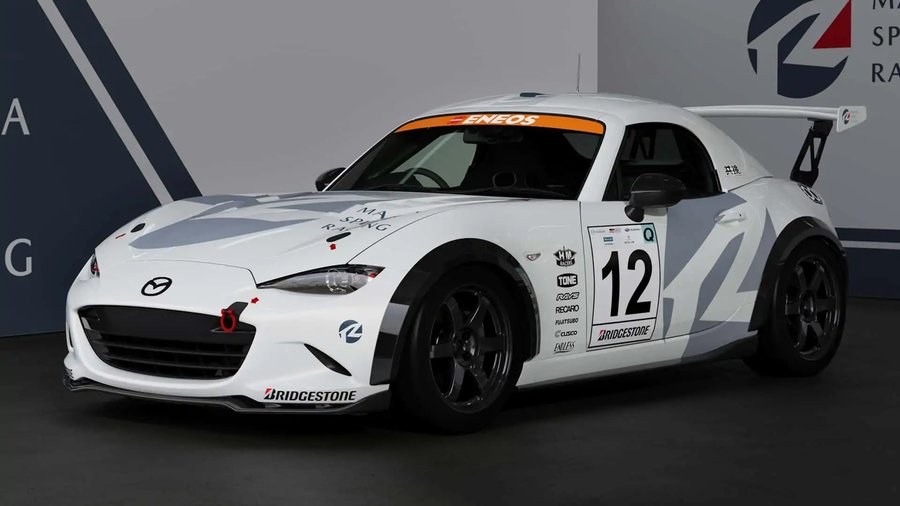Mazda MX-5 Miata To Go Racing Using Synthetic Carbon-Neutral Fuel

Mazda is yet another automaker exploring the use of synthetic carbon-neutral fuel. It is racing in this year's ENEOS Super Taikyu Series, and the company takes a new step in evaluating the fuel with the introduction of the Mazda CNF Concept that begins competing soon.
The Mazda MX-5 Miata features the brand's naturally aspirated Skyactiv-G 2.0-liter four-cylinder engine. It'll compete in the recently launched ST-Q class for special racing vehicles developed by manufacturers. Toyota is participating in it with the GR86 CNF concept that packs a smaller turbocharged 1.4-liter three-cylinder engine, competing alongside the Subaru BRZ with a 2.4-liter flat-four power plant.
Racing has been one industry segment open to exploring alternative fuel technologies. Dacia will go racing in the 2025 Dakar Rally using synthetic fuel, and even Formula 1 will begin using the stuff in a few years, which former F1 World Champion Sebastian Vettel is showcasing now that he's retired.
Synthetic fuel has been a popular topic for automakers as of late, even as they continue to invest in battery-electric vehicles. The journey to carbon neutrality might require several avenues to succeed, and drop-in replacement fuels could be one solution. It's certainly something many automakers are exploring.
Late last year, Porsche began developing e-fuel at its plant in Chile, but it'll be years before it can produce even a fraction of the amount of gas the world uses in a day. While Toyota is exploring the use of carbon-neutral fuel, its CEO does have reservations about the technology's viability as it requires a lot of energy to create, which could be a significant hurdle to its mainstream adoption. Volkswagen brand's head honcho called the stuff "unnecessary noise."
However, automakers' continued tinkering could one day make it a viable alternative for millions of combustion-powered cars already on the road. Stellantis announced in April that it was evaluating synthetic fuel in 28 of its gasoline and diesel engine families. It evaluated engines built from 2014 through the end of the decade.
While it seems like internal combustion engines are destined for the dustbin, it might be premature to write the obituary. The European Union voted earlier this year to allow the sale of new cars that run on synthetic fuel after 2035, giving automakers an alternative to the bloc's ICE ban. But it won't be viable if it requires too much energy to create, negating its benefits. That's one reason why Porsche's plant is in Chile, located in a place where the breeze blows 270 days a year for the wind turbines.
Related News


